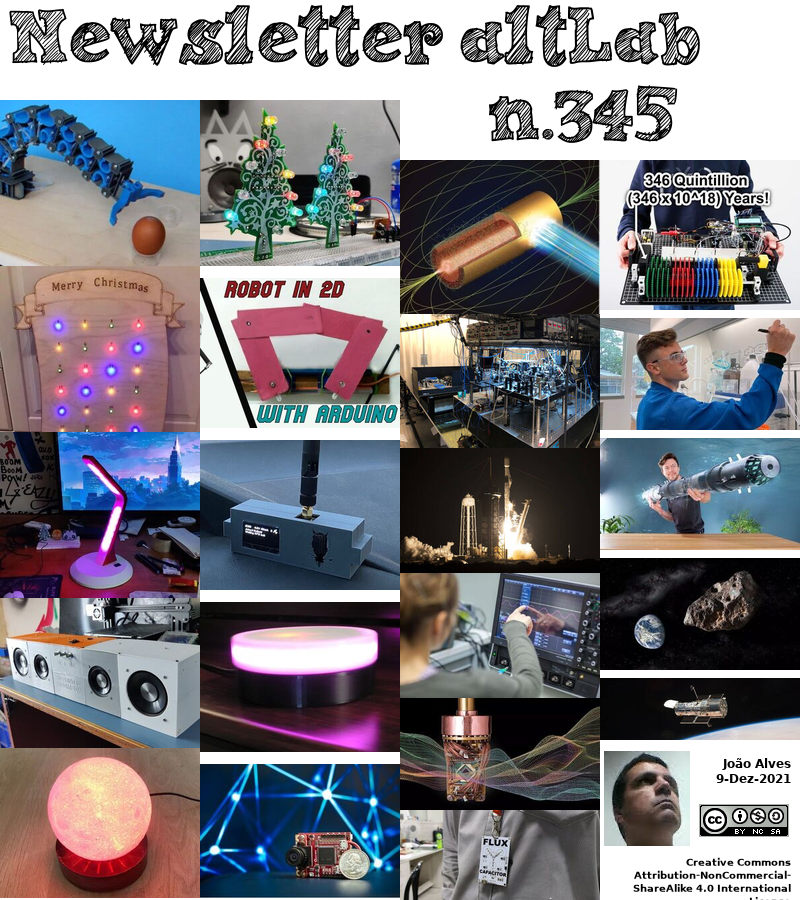2021-12-09 - Nº 345
Editorial
Esta é a Newsletter Nº 345 que se apresenta com o mesmo formato que as anteriores. Se gostar da Newsletter partilhe-a!
Todas as Newsletters encontram-se indexadas no link.
Esta Newsletter tem os seguintes tópicos:
Faz hoje anos que nascia, em 1742, o químico sueco Carl Wilhelm Scheele. Ele foi responsável pela descoberta do oxigénio em 1772. Scheele, um experimentador apurado, trabalhou em condições difíceis e muitas vezes perigosas. No seu único livro, Observações Químicas e Experiências sobre o Ar e o Fogo (1777), ele declarou que a atmosfera é composta por dois gases, um de apoio à combustão, que ele chamou "ar de fogo" (oxigénio), e o outro de prevenção, que ele chamou "ar viciado" (nitrogénio). Devido ao atraso na sua publicação, perdeu a prioridade à descoberta de oxigénio por parte de Priestley em 1774. Scheele descobriu muitas substâncias, tais como o cloro (1774), manganês (1774), tungsténio (1781), molibdénio (1782), glicerol, ácido cianídrico (prussic), ácido cítrico, sulfureto de hidrogénio e fluoreto de hidrogénio. Descobriu também um processo que se assemelha à pasteurização.
Faz também hoje anos que nascia, em 1839, o matemático alemão Gustav Roch. Ele deu contribuições significativas para a teoria das superfícies de Riemann.
Faz igualmente hoje anos que nascia, em 1868, o Químico e físico alemão Fritz Haber. Foi-lhe atribuido o Prémio Nobel da Química (1918) pelo seu desenvolvimento de um método de síntese de amoníaco (1909) directamente a partir do nitrogénio e hidrogénio. Isto levou à produção comercial em larga escala de fertilizante de azoto. Com a perícia de Carl Bosch, um químico que trabalha na Badische Anilin- und Soda- Fabrik (BASF), os obstáculos que impediram a adopção em larga escala do processo foram ultrapassados e o processo Haber-Bosch nasceu. O processo de alta pressão Haber-Bosch seguiu-se na década de 1920. Haber foi também responsável pela introdução de gases venenosos para a guerra química na I Guerra Mundial. Sendo judeu, deixou a Alemanha em 1933 para se exilar na Grã-Bretanha, trabalhando em Cambridge no Laboratório Cavendish.
Faz também hoje anos que nascia, em 1906, a matemática norte-americana Grace Hopper. Ela foi pioneira no desenvolvimento da tecnologia informática. Ajudou John Presper Eckert e John William Mauchly na concepção e desenvolvimento do BINAC (Computador Automático Binário). As suas ideias contribuíram para o primeiro computador electrónico comercial, Univac I, e aplicações navais para COBOL (co-mmon b-usiness o-riented l-anguage). Com um doutoramento em Matemática pela Universidade de Yale (1934), ensinou matemática (Vassar, 1931-43), antes de entrar para a Reserva Naval. Em 1944, foi contratada como Tenente (Junior Grade), destacada para o Bureau of Ordnance, onde se envolveu no desenvolvimento precoce do computador electrónico. Durante mais de quatro décadas, foi líder em aplicações informáticas e linguagens de programação.
Faz igualmente hoje anos que nascia, em 1917, o físico norte-americano James Rainwater. Ele ganhou uma parte do Prémio Nobel da Física em 1975 pela sua parte na determinação das formas assimétricas de certos núcleos atómicos. Durante a II Guerra Mundial, Rainwater trabalhou no Projecto Manhattan para desenvolver a bomba atómica. Em 1949 começou a formular uma teoria de que nem todos os núcleos atómicos são esféricos, como então se acreditava geralmente. A teoria foi testada experimentalmente e confirmada pelos físicos dinamarqueses Aage N. Bohr e Ben R. Mottelson. Pelo seu trabalho, os três cientistas receberam conjuntamente o Prémio Nobel da Física de 1975. Também realizou valiosas pesquisas sobre os raios X e participou em projectos de investigação da Comissão de Energia Atómica e naval.
Faz também hoje anos que nascia, em 1919, o químico e físico norte-americano William Lipscomb. Ele ganhou o Prémio Nobel da Química em 1976 pela sua investigação sobre a estrutura dos boranos (compostos de hidreto de boro), trabalho que também respondeu a questões gerais sobre a ligação química. Os boranos tornaram-se importantes na investigação química nos anos 40 e 50 devido à necessidade de encontrar compostos de urânio voláteis (boroidridos) para a separação de isótopos, bem como à necessidade de desenvolver combustíveis de alta energia para foguetes e aviões a jacto. Para mapear as estruturas moleculares dos boranos, Lipscomb desenvolveu também técnicas de raios X que mais tarde encontraram aplicação em muitas outras áreas de investigação química. Os interesses de investigação de Lipscomb incluíam a relação da estrutura tridimensional e mecanismos de enzimas e outras proteínas.
Por fim, faz hoje anos que nascia, em 1926, o físico nuclear norte-americano Henry Way Kendall. Ele partilhou o Prémio Nobel da Física de 1990 com Jerome Isaac Friedman e Richard E. Taylor pela obtenção de provas experimentais da existência das partículas subatómicas conhecidas como quarks. Para estudar a estrutura interna do protão, trabalharam com o acelerador linear de 3 km recentemente inaugurado em Stanford (SLAC). Os electrões foram acelerados para uma energia de 20.000 milhões de electrões-volts e dirigidos contra um alvo de hidrogénio líquido. Em 1969, Kendall ajudou a fundar a União de Cientistas Preocupados. Em 1997, em ligação com a Cimeira do Clima de Quioto, ajudou a produzir uma declaração assinada por 2.000 cientistas apelando à acção sobre o aquecimento global.
Em 1968 era apresentado o primeiro rato para computador. Foi na Fall Joint Computer Conference da American Federation of Information Processing Societies na Universidade de Stanford, Califórnia. O inventor do rato, Doug Engelbart e uma pequena equipa de investigadores do Instituto de Investigação de Stanford abanaram o mundo informático com uma extraordinária demonstração numa conferência informática em São Francisco. Estrearam o rato de computador, a interface gráfica do utilizador, a edição de ecrã e textos e gráficos integrados, hiper-documentos, e vídeo-conferências de duas vias com espaços de trabalho partilhados. Estes conceitos e tecnologias deveriam tornar-se as pedras angulares da moderna computação interactiva. Engelbart patenteou o rato a 17 de Novembro de 1970.
Na semana que passou foi revelada uma fotografia tirada pelo rover chinês, o Yutu-2, de um objecto em forma de cubo na superfície da Lua. A equipa do rover está a planear passar mais perto do local para ver de perto o objecto.
Na Newsletter desta semana apresentamos diversas noticias, artigos científicos, projetos de maker assim como alguns videos interessantes.
 João Alves ([email protected])
João Alves ([email protected])
O conteúdo da Newsletter encontra-se sob a licença  Creative Commons Attribution-NonCommercial-ShareAlike 4.0 International License.
Creative Commons Attribution-NonCommercial-ShareAlike 4.0 International License.
Novidades da Semana

China moon rover will investigate cube-shaped 'mystery' object on lunar far side
"The Yutu-2 rover is on a roll. It's been exploring the far side of the moon since early 2019 as part of China's Chang'e-4 lunar lander mission. It now has its eyes set on a strange-looking cube-shaped object it spotted in the distance. Andrew Jones, a journalist who covers the Chinese space program for SpaceNews and Space.com, highlighted a new rover update in a series of tweets Friday. The nickname for the cube-shaped object translates to "mystery house." The rover team is planning to drive over and get a closer look at the object." [...]
Outras Notícias

NASA’s Next-Generation Asteroid Impact Monitoring System Goes Online
"The new system improves the capabilities of NASA JPL’s Center for Near Earth Object Studies to assess the impact risk of asteroids that can come close to our planet. To date, nearly 28,000 near-Earth asteroids (NEAs) have been found by survey telescopes that continually scan the night sky, adding new discoveries at a rate of about 3,000 per year. But as larger and more advanced survey telescopes turbocharge the search over the next few years, a rapid uptick in discoveries is expected. In anticipation of this increase, NASA astronomers have developed a next-generation impact monitoring algorithm called Sentry-II to better evaluate NEA impact probabilities. Popular culture often depicts asteroids as chaotic objects that zoom haphazardly around our solar system, changing course unpredictably and threatening our planet without a moment’s notice. This is not the reality." [...]
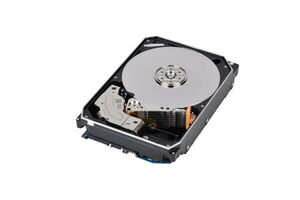
Toshiba Unveils New 18TB MN09 Series NAS Hard Disk Drives
"Toshiba Electronic Devices & Storage Corporation (“Toshiba”) announces the MN09, a massive capacity 18TB [1] addition to its NAS HDD line-up. High growth in data creation is driving demand for higher storage capacities, and work-from-home customers need fast access to data and the ability to archive and share data in private cloud environments. The 18TB MN09 delivers greater storage capacity and power efficiency to meet the growing needs of storage customers. MN09 is a 9-disk helium-sealed conventional magnetic recording (CMR) drive that leverages Toshiba’s new innovative Flux Control Microwave-Assisted Magnetic Recording (FC-MAMR™) technology. FC-MAMR™ advances CMR capacity to 18TB and delivers increased density per platter over previous designs. The MN09 is the 3rd generation to use Toshiba’s pioneering 9-disk helium-sealed mechanical design." [...]
Microchip to Provide Silicon Carbide MOSFETs and Digital Gate Drivers for Mersen’s SiC Power Stack Reference Design
"Electric vehicle, commercial transportation, renewable energy and storage system designers can benefit from silicon carbide stack solution that drives performance and cost efficiencies and accelerates time to market by up to six months. E-mobility and renewable energy systems require power management solutions that drive performance and cost efficiencies in addition to speeding up development time. To keep pace with these requirements, Microchip Technology Inc. (Nasdaq: MCHP) today announced the collaboration with Mersen on their 150 kilovolt-ampere (kVA) three-phase silicon carbide Power Stack Reference Design. Mersen is a global provider of power management solutions for numerous industrial sectors including e-mobility and energy storage. Mersen’s three-phase SiC Power Stack Reference Design provides system designers with a complete, compact, high-power silicon carbide solution without the need for individual device sourcing, testing and qualification. The Power Stack Reference Design includes Microchip’s silicon carbide power modules and digital gate drivers and Mersen’s bus bar, fuses, capacitors and thermal management, optimally designed together in a single high-performance stack reference design." [...]

TI's new precision wideband ADC pushes data-acquisition performance higher while cutting size and power consumption in half
"Texas Instruments (TI) (Nasdaq: TXN) today introduced the smallest 24-bit wideband analog-to-digital converter (ADC) that delivers industry-leading signal-measurement precision at wider bandwidths than competing ADCs. The ADS127L11, the newest product in TI’s portfolio of precision wideband ADCs, achieves ultra-precise data acquisition in a 50% smaller package, significantly optimizing power consumption, resolution and measurement bandwidth for a wide range of industrial systems. For more information, see www.ti.com/product/ADS127L11. "There is a clear trend toward smaller solution size and lower power consumption in applications such as test and measurement equipment and portable medical devices, where improved battery life is imperative," said Noman Akhtar, senior research analyst, Omdia. "There is an urgency to provide increased data throughput, higher bandwidth and lower power, all in a smaller footprint." Capture high-resolution signals with 50% wider bandwidth and 25% lower latency The highly flexible ADS127L11 offers wideband and low-latency filter options to optimize ADC performance and deliver tailored, high-performance data acquisition in a broad range of industrial systems." [...]

Analog Devices’ RadioVerse® SoC Drives 5G Radio Efficiency and Performance
"Analog Devices, Inc. (Nasdaq: ADI) today announced a breakthrough RadioVerse® System-on-Chip (SoC) series providing radio unit (RU) developers with an agile and cost-effective platform to create the most energy efficient 5G RUs in the industry. The new SoC series provides advanced RF signal processing with expanded digital functionality and RF capacity that greatly improves 5G RU performance and energy efficiency. The SoCs are the newest addition to ADI’s RadioVerse ecosystem and combine its award-winning Zero IF (ZiF) architecture with significant advances in functional integration and linearization. ADI’s RadioVerse devices are the most widely used software-defined transceivers in 4G and 5G RUs worldwide.1 “Samsung and ADI have long worked together to support the swift deployment of 5G in the global market,” said Dong Geun Lee, Vice President and Head of Hardware R&D Group, Network Business at Samsung Electronics. “We are excited for the successful launch of ADI’s new SoC, as we expect this cutting-edge technology will bring better 5G experience to consumers. We look forward to expanding our engagement with ADI.” Demand for power efficient RUs is expanding rapidly as global network operators race to deploy 5G infrastructure." [...]

Industrial Smart-Sensor Evaluation Kit from STMicroelectronics Accelerates Design with IO-Link Transceiver and STM32 MCU
"Featuring a slim, 45.8mm x 8.3mm main board, the STMicroelectronics STEVAL-IOD04KT1 industrial-sensor kit simplifies the development of compact IO-Link (IEC 61131-9) sensors for fieldbus-independent point-to-point bi-directional communication. The main board integrates an STM32G0 microcontroller with ST’s L6364W IO-Link transceiver, IIS2MDC high-accuracy 3-axis digital output magnetometer, and ISM330DHCX iNEMO™ inertial module with machine-learning core. The compact dimensions, permitted by the tiny chip-scale package sizes of the L6364W, in 2.5mm x 2.5mm CSP19, and the STM32G0 in 2.3mm x 2.5mm WLCSP25, allow an extremely small sensor enclosure. Fitted with a 4-pole M8 industrial connector, the board connects to any IO-Link main controller that supports IO-Link 1.1. A 10-pin expansion connector allows adding extra sensing modalities. The companion STM32Cube software pack, STSW-IOD04K, provides the IO-Link Device Description (IODD) file, ST-proprietary IO-Link demo-stack, and routines for managing the L6364W and MEMS sensors." [...]

onsemi Launches High-Performance, Low Power-Loss SUPERFET V Family of MOSFETs for Server and Telecom Applications
"onsemi (Nasdaq: ON), a leader in intelligent power and sensing technologies, today announced its new 600 V SUPERFET V® family of MOSFETs. The high-performance devices enable power supplies to meet demanding efficiency regulations such as 80 PLUS Titanium, especially at the highly challenging 10% load condition. As part of the 600 V SUPERFET family, three product groups – FAST, Easy Drive and FRET – are optimized to deliver class-leading performance in a variety of applications and topologies. The 600 V SUPERFET V family offers excellent switching characteristics and lower gate noise resulting in enhanced electromagnetic interference (EMI) performance – a significant benefit for server and telecom systems. Additionally, system reliability is enhanced by a robust body diode and elevated VGSS (DC plus−minus 30 V). “With the objective of tackling climate change, 80 Plus Titanium certification requires server and data storage hardware to deliver 90% power efficiency levels in 10% load conditions, and 96% efficiencies when dealing with 50% loads,” said, Asif Jakwani, senior vice president and general manager, Advanced Power Division, at onsemi." [...]

Renesas Programmable Smart Gate Driver for BLDC Motor Applications Drives Multiple Configurations; Integrates Analog Power Components to Reduce BOM Cost and Board Space
"The RAA227063 Pairs with a Variety of MCUs to Deliver Efficient, Flexible Motor Control in a Smaller Footprint; New Winning Combo Showcases the Device with Renesas’ New RA6T2 MCU Renesas Electronics Corporation (TSE:6723), a premier supplier of advanced semiconductor solutions, today introduced the RAA227063 Smart Gate Driver for brushless DC (BLDC) motor applications. The new device is programmable via an SPI interface, enabling it to support both motors with rotor position sensors and sensorless applications. It also provides programmable gate drive voltage, offering support for N-channel MOSFETs typically used in motor inverter designs, as well as GaN FETs used where high power density is required. The RAA227063 is scalable to support multiple MCUs, including a wide range of Renesas offerings. In addition to its unique flexibility, the RAA227063 three-phase FET driver is highly integrated. It includes a 500 mA buck-boost converter that powers low-voltage logic directly from the battery pack with better power efficiency (90%) compared to traditional LDOs (40%)." [...]

STMicroelectronics Drives the Future of EVs and Industrial Applications with New Silicon-Carbide Devices
"STMicroelectronics (NYSE: STM), a global semiconductor leader serving customers across the spectrum of electronics applications, is introducing its third generation of STPOWER silicon-carbide (SiC) MOSFETs1, advancing the state-of-the-art in power devices for electric-vehicle (EV) powertrains and other applications where power density, energy efficiency, and reliability are important target criteria. The market leader in SiC power MOSFETs, ST has incorporated new and advanced design know-how to open up even more of SiC’s energy-saving potential. The effort continues to drive the transformation of the EV and industrial markets. With the acceleration of the EV market many car makers and automotive suppliers are now embracing 800V drive systems to achieve much faster charging and help reduce EV weight. These new systems allow the car makers to produce vehicles with longer driving ranges. ST’s new SiC devices are specifically optimized for these high-end automotive applications including EV traction inverters, on-board chargers, and DC/DC converters, as well as e-climate compressors." [...]

Renesas Introduces RA6T2 MCUs for Next-Generation Motor Control in Inverter Appliances, Building Automation and Industrial Drives
"New MCUs Achieve Higher-Performance, Cost-Efficient Motor Control with a High Frequency Arm Cortex®-M33 Core, a Hardware Accelerator and a Targeted Feature Set; New, Easy-to-Use Motor Control Tools and Kits Speed Design Process. Renesas Electronics Corporation (TSE:6723), a premier supplier of advanced semiconductor solutions, today introduced the RA6T2 Group MCUs featuring a rich set of peripheral functions and hardware accelerator designed specifically for motor control. The new RA6T2 Group MCUs deliver an unmatched combination of performance, features, and cost-efficiency for motor control designs in home appliances, smart home, industrial and building automation, as well as inverter control. Based on the 240-MHz Arm Cortex®-M33 core, the new RA6T2 32-bit MCUs feature peripherals optimized for high performance and precision motor control in order to reduce bill of materials (BOM) cost while boosting performance. For example, two independent ADC units offer high-speed conversion with a maximum speed of 0.16 µsec and include a simultaneous sample and hold function for three channels to detect the three-phase current of a motor. In addition, amplifiers that can set the gain according to the input voltage range are built in, and analog components that were previously external are incorporated, including comparators which detect abnormal voltage input and over current." [...]

NASA Launches New Mission to Explore Universe’s Most Dramatic Objects
"NASA’s Imaging X-ray Polarimetry Explorer (IXPE) mission launched at 1 a.m. EST Thursday on a SpaceX Falcon 9 rocket from NASA’s Kennedy Space Center in Florida. A joint effort with the Italian Space Agency, the IXPE observatory is NASA’s first mission dedicated to measuring the polarization of X-rays from the most extreme and mysterious objects in the universe – supernova remnants, supermassive black holes, and dozens of other high-energy objects. “IXPE represents another extraordinary first,” said Thomas Zurbuchen, associate administrator for the Science Mission Directorate at NASA Headquarters in Washington. “Together with our partners in Italy and around the world, we’ve added a new space observatory to our fleet that will shape our understanding of the universe for years to come. Each NASA spacecraft is carefully chosen to target brand new observations enabling new science, and IXPE is going to show us the violent universe around us – such as exploding stars and the black holes at the center of galaxies – in ways we’ve never been able to see it.” The rocket performed as expected, with spacecraft separation taking place 33 minutes into flight. Approximately one minute later, the spacecraft unfurled its solar arrays." [...]

'Potentially hazardous' asteroid worth nearly $5 billion will skim past Earth this week, NASA says
"A gigantic, "potentially hazardous" space rock bigger than the Eiffel Tower will enter Earth’s orbital path on Dec. 11, according to NASA. The egg-shaped asteroid, named 4660 Nereus, is 1,082 feet (330 meters) long and will break into Earth’s orbit traveling at 14,700 mph (23,700 km/h) on Saturday, Dec. 11. Thankfully for all of our weekend plans, the asteroid is expected to skim past Earth at some distance without making impact, but it will still be closer to us than it has been in 20 years. Nereus — named after the Greek sea god who was the son of Gaia, the personification of the Earth — will be roughly 2.4 million miles away (3.86 million km), around 10 times the distance between Earth and the moon. This may sound like an enormous gap, but by cosmic standards, it’s actually a stone’s throw away. NASA flags any space object that comes within 120 million miles (193 million kilometers) of Earth as a "near-Earth object" and any fast-moving object within 4.65 million miles (7.5 million km) as "potentially hazardous."" [...]

NASA Returns Hubble to Full Science Operations
"NASA’s Hubble Space Telescope team recovered the Space Telescope Imaging Spectrograph on Monday, Dec. 6, and is now operating with all four active instruments collecting science. The team has still not detected any further synchronization message issues since monitoring began Nov. 1. The team will continue work on developing and testing changes to instrument software that would allow them to conduct science operations even if they encounter several lost synchronization messages in the future. The first of these changes is scheduled to be installed on the Cosmic Origins Spectrograph in mid-December. The other instruments will receive similar updates in the coming months. Hubble has been operating now for over 31 years, collecting ground-breaking science observations that have changed our fundamental understanding of the universe." [...]
Ciência e Tecnologia
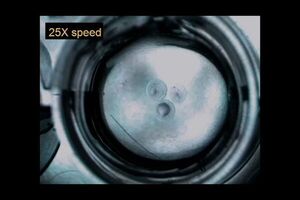
These Tiny Liquid Robots Never Run Out of Juice as Long as They Have Food
"When you think of a robot, images of R2-D2 or C-3PO might come to mind. But robots can serve up more than just entertainment on the big screen. In a lab, for example, robotic systems can improve safety and efficiency by performing repetitive tasks and handling harsh chemicals. But before a robot can get to work, it needs energy – typically from electricity or a battery. Yet even the most sophisticated robot can run out of juice. For many years, scientists have wanted to make a robot that can work autonomously and continuously, without electrical input." [...]

Probing the advantages of quantum sensors
"While computers exploiting the exotic nature of quantum mechanics garner most of the press around quantum research, the related technology of quantum sensors deserves its share of attention. Particles and atoms in certain quantum states have the potential to make the most exquisite sensors for detecting phenomena such as magnetic fields and changes in inertia. Those abilities have a range of national security applications, which include inertial navigation systems that can still operate without a GPS signal, improved radar and LIDAR, underground mapping, and detection of underground explosions, to name a few. Quantum sensors show great promise, but much basic science remains to realize their potential. Research at Los Alamos National Laboratory as part of the Quantum Science Center is drawing on the Lab’s leading-edge work with quantum algorithms. In a unique synergy between theory and experiment, the Laboratory team seeks to develop hardware that generates quantum correlations and provides a clear quantum advantage in sensing, going far beyond anything a conventional sensor can do." [...]

A tool to speed development of new solar cells
"A new computational simulator can help predict whether changes to materials or design will improve performance in new photovoltaic cells. In the ongoing race to develop ever-better materials and configurations for solar cells, there are many variables that can be adjusted to try to improve performance, including material type, thickness, and geometric arrangement. Developing new solar cells has generally been a tedious process of making small changes to one of these parameters at a time. While computational simulators have made it possible to evaluate such changes without having to actually build each new variation for testing, the process remains slow. Now, researchers at MIT and Google Brain have developed a system that makes it possible not just to evaluate one proposed design at a time, but to provide information about which changes will provide the desired improvements. This could greatly increase the rate for the discovery of new, improved configurations." [...]

Optical cavities could be key to next generation interferometers
"A new concept has been developed that has the potential to assist new instruments in the investigation of fundamental science topics such as gravitational waves and dark matter. The concept is described in a paper written by UK Quantum Technology Hub Sensors and Timing researchers at the University of Birmingham and published in Communications Physics, and a related patent application filed by University of Birmingham Enterprise. It proposes a new method of using optical cavities to enhance atom interferometers – highly sensitive devices that use light and atoms to make ultra-precise measurements. Although itself challenging to implement, the concept presents a method of overcoming substantial technological challenges involved in the pursuit of atom interferometers operating at extreme momentum transfer – a technique which would allow atoms to be placed into a quantum superposition over large distances. This is key to enabling the sensitivities required for these devices to investigate signals from dark matter and gravitational waves. The exploration of dark matter, and the detection of gravitational waves from the very early Universe is key to developing our collective knowledge of fundamental physics." [...]

Scientists model elusive fundamental particle in a beam of light
"Physicists created and detected Skyrmions after they constructed a topological model of these elusive fundamental particles in a light beam. Professor Janne Ruostekoski from Lancaster University collaborated with researchers from the University of Birmingham, Riken in Japan and Muenster in Germany to construct a theoretical model where light forms a localised particle-like knotted object in space. The proposed light particle was then experimentally created and measured in a laboratory in Muenster. Their research is published in Nature Communications. This topological model of a particle for a light beam is reminiscent of theoretical models of elusive elementary particles predicted 60 years ago when Professor Tony Skyrme, a mathematical physicist at the University of Birmingham, developed a system to demonstrate Skyrmion’s behavior. His system used the structure of spheres in 4-dimensional space to guarantee the indivisible nature of this elusive kind of fundamental particle in 3 dimensions." [...]

A task like landing on the moon
"Quantum technologies will revolutionize the economy and society in the future. Helmholtz is pooling its expertise in the field and creating a unique platform. Thousands of researchers around the world are working on a gigantic goal: a new kind of computer that cracks tasks that all classical computers fail at. The bizarre laws of quantum physics are supposed to help the "quantum computer" achieve incredible computing speeds. Today, utopian breakthroughs await, for example in materials research, in the optimization of highly complex logistics or traffic flows, or in the simulation of chemical reactions. For example, the quantum computer could provide the key to a more climate-friendly production process for artificial fertilizers." [...]

Tiny machine learning design alleviates a bottleneck in memory usage on internet-of-things devices
"Machine learning provides powerful tools to researchers to identify and predict patterns and behaviors, as well as learn, optimize, and perform tasks. This ranges from applications like vision systems on autonomous vehicles or social robots to smart thermostats to wearable and mobile devices like smartwatches and apps that can monitor health changes. While these algorithms and their architectures are becoming more powerful and efficient, they typically require tremendous amounts of memory, computation, and data to train and make inferences. At the same time, researchers are working to reduce the size and complexity of the devices that these algorithms can run on, all the way down to a microcontroller unit (MCU) that’s found in billions of internet-of-things (IoT) devices. An MCU is memory-limited minicomputer housed in compact integrated circuit that lacks an operating system and runs simple commands. These relatively cheap edge devices require low power, computing, and bandwidth, and offer many opportunities to inject AI technology to expand their utility, increase privacy, and democratize their use — a field called TinyML." [...]

Molecular device turns infrared into visible light
"Researchers at EPFL, China, Spain and the Netherlands have built a micro-device that uses vibrating molecules to transform invisible mid-infrared light into visible light. The breakthrough ushers in a new class of compact sensors for thermal imaging and chemical or biological analysis. Light is an electromagnetic wave: it consists of oscillating electric and magnetic fields propagating through space. Every wave is characterized by its frequency, which refers to the number of oscillations per second, measured in Hertz (Hz). Our eyes can detect frequencies between 400 and 750 trillion Hz (or terahertz, THz), which define the visible spectrum. Light sensors in cell phone cameras can detect frequencies down to 300 THz, while detectors used for internet connections through optical fibers are sensitive to around 200 THz." [...]

Physicists exploit space and time symmetries to control quantum materials
"Physicists from Exeter and Trondheim have developed a theory describing how space reflection and time reversal symmetries can be exploited, allowing for greater control of transport and correlations within quantum materials Two theoretical physicists, from the University of Exeter (United Kingdom) and the Norwegian University of Science and Technology (in Trondheim, Norway), have built a quantum theory describing a chain of quantum resonators satisfying space reflection and time reversal symmetries. They have shown how the different quantum phases of such chains are associated with remarkable phenomena, which may be useful in the design of future quantum devices relying on strong correlations. A common distinction in physics is between open and closed systems. Closed systems are isolated from any external environment, such that energy is conserved because there is nowhere for it to escape to. Open systems are connected to the outer world, and via exchanges with the environment they are subject to energy gains and energy losses. There is an important third case." [...]
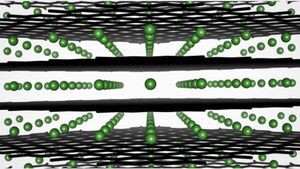
Scientists identify another reason why batteries can’t charge in minutes
"Researchers find new issue complicating fast charging. Haste makes waste, as the saying goes. Such a maxim may be especially true of batteries, thanks to a new study that seeks to identify the reasons that cause the performance of fast charged lithium-ion batteries to degrade in electric vehicles. In new research from the U.S. Department of Energy’s (DOE) Argonne National Laboratory, scientists have found interesting chemical behavior of one of the battery’s two terminals as the battery is charged and discharged. Lithium-ion batteries contain both a positively charged cathode and a negatively charged anode, which are separated by a material called an electrolyte that moves lithium ions between them. The anode in these batteries is typically made out of graphite — the same material found in many pencils." [...]

Generating a realistic 3D world
"A new AI-powered, virtual platform uses real-world physics to simulate a rich and interactive audio-visual environment, enabling human and robotic learning, training, and experimental studies. While standing in a kitchen, you push some metal bowls across the counter into the sink with a clang, and drape a towel over the back of a chair. In another room, it sounds like some precariously stacked wooden blocks fell over, and there’s an epic toy car crash. These interactions with our environment are just some of what humans experience on a daily basis at home, but while this world may seem real, it isn’t. A new study from researchers at MIT, the MIT-IBM Watson AI Lab, Harvard University, and Stanford University is enabling a rich virtual world, very much like stepping into “The Matrix.” Their platform, called ThreeDWorld (TDW), simulates high-fidelity audio and visual environments, both indoor and outdoor, and allows users, objects, and mobile agents to interact like they would in real life and according to the laws of physics. Object orientations, physical characteristics, and velocities are calculated and executed for fluids, soft bodies, and rigid objects as interactions occur, producing accurate collisions and impact sounds." [...]
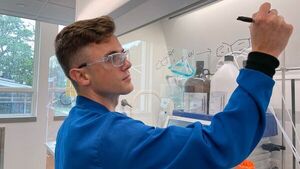
Teaching an old chemical new tricks
"They say you can’t teach an old dog new tricks, but can you do new tricks with old chemical catalysts? Cold Spring Harbor Laboratory Professor John E. Moses and his team have paired a catalyst called “Barton’s base” developed in the 1980s with a new family of chemical reactions. This powerful combination results in a chemical transformation that happens within minutes or even seconds. Their new chemistry can accelerate the generation of complex molecules needed for biomedical research, drug development, and materials science. Click chemistry enables chemical building blocks to be joined together quickly, reliably, and cleanly. A click reaction often requires a catalyst to jumpstart it." [...]

Engineers Teach AI to Navigate Ocean with Minimal Energy
"Research could enable monitoring of our oceans or exploration of alien ocean worlds Engineers at Caltech, ETH Zurich, and Harvard are developing an artificial intelligence (AI) that will allow autonomous drones to use ocean currents to aid their navigation, rather than fighting their way through them. "When we want robots to explore the deep ocean, especially in swarms, it's almost impossible to control them with a joystick from 20,000 feet away at the surface. We also can't feed them data about the local ocean currents they need to navigate because we can't detect them from the surface. Instead, at a certain point we need ocean-borne drones to be able to make decisions about how to move for themselves," says John O. Dabiri (MS '03, PhD '05), the Centennial Professor of Aeronautics and Mechanical Engineering and corresponding author of a paper about the research that was published by Nature Communications on December 8. The AI's performance was tested using computer simulations, but the team behind the effort has also developed a small palm-sized robot that runs the algorithm on a tiny computer chip that could power seaborne drones both on Earth and other planets. The goal would be to create an autonomous system to monitor the condition of the planet's oceans, for example using the algorithm in combination with prosthetics they previously developed to help jellyfish swim faster and on command." [...]

Towards the achievement of megatesla magnetic fields in the laboratory
"High-precision 3D supercomputer simulations reveal the 3D structure of theoretically predicted micron-scale megatesla magnetic fields, optimizing engineering design of laser conditions and micron-size target structures for future laser experiments Recently, a research team at Osaka University has successfully demonstrated the generation of megatesla (MT)-order magnetic fields via three-dimensional particle simulations on laser-matter interaction. The strength of MT magnetic fields is 1-10 billion times stronger than geomagnetism (0.3-0.5 G), and these fields are expected to be observed only in the close vicinity of celestial bodies such as neutron stars or black holes. This result should facilitate an ambitious experiment to achieve MT-order magnetic fields in the laboratory, which is now in progress. Since the 19th century, scientists have strived to achieve the highest magnetic fields in the laboratory. To date, the highest magnetic field observed in the laboratory is in the kilotesla (kT)-order. In 2020, Masakatsu Murakami at Osaka University proposed a novel scheme called microtube implosions (MTI) [1, 2] to generate ultrahigh magnetic fields on the MT-order." [...]
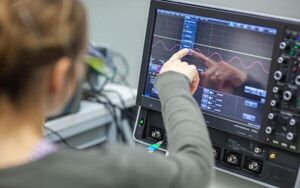
Researchers develop an algorithm to increase the efficiency of quantum computers
"Quantum computing is taking a new leap forward due to research done in collaboration between University of Helsinki, Aalto University, University of Turku, and IBM Research Europe-Zurich. The team of researchers have proposed a scheme to make quantum computers more efficient, faster, and ultimately more sustainable. Quantum computers have the potential to solve important problems that are beyond reach even for the most powerful supercomputers, but they require an entirely new way of programming and creating algorithms. Universities and major tech companies are spearheading research on how to develop these new algorithms. In a recent collaboration between University of Helsinki, Aalto University, University of Turku, and IBM Research Europe-Zurich, a team of researchers have developed a new method to speed up calculations on quantum computers. The results are published in the prestigious journal PRX Quantum of the American Physical Society." [...]

Transforming Materials with Light
"Imagine windows that can easily transform into mirrors, or super high-speed computers that run not on electrons but light. These are just some of the potential applications that could emerge from optical engineering, the practice of using lasers to rapidly and temporarily change the properties of materials. "These tools could let you transform the electronic properties of materials at the flick of a light switch," says Caltech Professor of Physics David Hsieh. "But the technologies have been limited by the problem of the lasers creating too much heat in the materials." In a new study in Nature, Hsieh and his team, including lead author and graduate student Junyi Shan, report success at using lasers to dramatically sculpt the properties of materials without the production of any excess damaging heat. "The lasers required for these experiments are very powerful, so it's hard to not heat up and damage the materials," says Shan." [...]

Evidence emerges for dark-matter free galaxies
"An international team of astronomers led by researchers from the Netherlands has found no trace of dark matter in the galaxy AGC 114905, despite taking detailed measurements over a course of fourty hours with state-of-the-art telescopes. They will present their findings in Monthly Notices of the Royal Astronomical Society. When Pavel Mancera Piña (University of Groningen and ASTRON, the Netherlands) and his colleagues discovered six galaxies with little to no dark matter, they were told “measure again, you'll see that there will be dark matter around your galaxy”. However, after fourty hours of detailed observations using the Very Large Array (VLA) in New Mexico (United States), the evidence for a dark matter-free galaxy only became stronger. The galaxy in question, AGC 114905, is about 250 million light-years away. It is classified as an ultra-diffuse dwarf galaxy, with the name ‘dwarf galaxy’ referring to its luminosity and not to its size." [...]

Shrinking Qubits for Quantum Computing with Atom-Thin Materials
"Using 2D materials, researchers have built superconducting qubits that are a fraction of the size of previous qubits, paving the way for smaller quantum computers. For quantum computers to surpass their classical counterparts in speed and capacity, their qubits—which are superconducting circuits that can exist in an infinite combination of binary states—need to be on the same wavelength. Achieving this, however, has come at the cost of size. Whereas the transistors used in classical computers have been shrunk down to nanometer scales, superconducting qubits these days are still measured in millimeters—one millimeter is one million nanometers. Combine qubits together into larger and larger circuit chips, and you end up with, relatively speaking, a big physical footprint, which means quantum computers take up a lot of physical space. These are not yet devices we can carry in our backpacks or wear on our wrists." [...]

Technique enables real-time rendering of scenes in 3D
"The new machine-learning system can generate a 3D scene from an image about 15,000 times faster than other methods. Humans are pretty good at looking at a single two-dimensional image and understanding the full three-dimensional scene that it captures. Artificial intelligence agents are not. Yet a machine that needs to interact with objects in the world — like a robot designed to harvest crops or assist with surgery — must be able to infer properties about a 3D scene from observations of the 2D images it’s trained on. While scientists have had success using neural networks to infer representations of 3D scenes from images, these machine learning methods aren’t fast enough to make them feasible for many real-world applications. A new technique demonstrated by researchers at MIT and elsewhere is able to represent 3D scenes from images about 15,000 times faster than some existing models." [...]
Projetos Maker
Diversos Projetos interessantes.
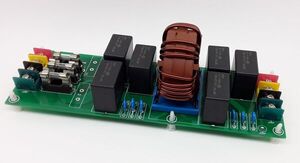
3 Phase (3 Wire) EMI Filter – 480VAC
"The project presented here is a 3 Phase (3Wire) EMI Power line filter which reduces electromagnetic interference and noise conducting in to and out of equipment power lines. These EMI filters can prevent electromagnetic noise of equipment going into the power line and disturb the proper functions of other devices such as communication devices, digital circuits, and robotics thus noise generated from switched power electronics. This single-stage board is designed and built using a high-quality common mode inductor and AC capacitors. This filter can be used to filter EMI noise in AC power lines 480VAC and can handle currents up to 10A. 3 x fuses are provided for over current and short circuit protection. It is easy to connect inputs and outputs using Barrier’s screw terminals." [...]
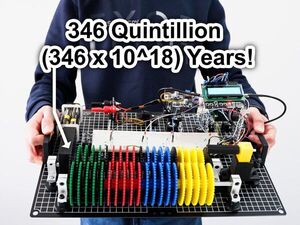
Infinity Gears
"346 Quintillion (346 x 10^18) Years! Even the universe (most probably) won't see the full rotation of the last gear! Story Arthur Ganson built an inspiring sculpture named "Machine with Concrete" composed of 12 stages of 1/50 ratio gears all connected together. The first gear rotates at 200 rpm, full rotation takes 1/200 minutes. Guess the last gear's (which is buried in concrete) full rotation time: 13.7 Billion (10^12) years! No matter how fast you rotate the first gear, your effort diminishes inside the system." [...]

How to save money with IOT
"Use IOT to detect errors in the night setback function of your heating system and save costs through effective heating settings. Night setback of heating systems When you are at home, chilling in the living room, you like to have it cozy and warm. Especially in winter. Central heating systems give us warmth without having to cut down trees and chop wood. Very practical! And since the apartment is not needed so warm when you are not at home, or when you lie in bed at night, you can simply turn down the heating system at these times." [...]
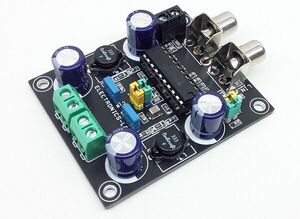
10W Class-D Stereo Audio Amplifier with Mute, Shutdown and Four Gain Settings
"This is a Class-D Stereo audio amplifier project that provides 10W stereo output. The amplifier includes Gain control using 2 x Jumpers, Mute function, and shutdown function. RCA female connectors are provided for the audio source input, screw terminals are provided for an easy interface with speakers and power supply input. The project was built using a TPA3125D2 chip from TI. The TPA3125D2 is a 10-W (per channel), efficient, Class-D audio power amplifier for driving stereo speakers in a single-ended configuration; or, a mono speaker in a bridge-tied-load configuration. The TPA3125D2 can drive stereo speakers as low as 4 Ω." [...]

DESK LAMP With ESP12F and RGB LEDs
"Hey everyone what's up! So here's something cool, a Designer RGB LAMP made with a custom 3D Printed body and a WIFI Based Board that uses Neopixels and an ESP8266 as the main controller. This Instructables will be about its overall Built process that includes every process, from the body design to the circuit assembly. Supplies - PCBs - WS2812B LEDs x 14 - 100nf Capacitor 0603 x 14 - ESP12F Module x 1 - AMS1117 3.3V x 1 - 10uF Cap x 1 - 100uF Cap x 1 - 0 ohms Resistance x 2 - 10K x 4 - Female header pins - 10uF 16V Aluminium Capacitor x 1 - Solder Paste - 3D Printed body (STEP FILE and FUSION360 FILE are both attached) - HOTPLATE" [...]

DIY LUMAZOID Arduino Music Visualiser
"A real-time music visualizer that lets you display an awesome light show that is synchronized to your music. This time I will show you how to make a real-time music visualizer that lets you display an awesome light show that is synchronized to your music. The original project is Open Source, and is the work of "nootropic design". At their website "https://nootropicdesign.com/lumazoid/" you can order Lumazoid Realtime Music Visualizer Board with, or without a power supply. In this video, I will describe how to make the device yourself with the help of Arduino Uno or Arduino Nano microcontroller. The device works with any WS2812 / WS2812B LED strips like NeoPixel and others and also Supports 60, 120, or 180 LED strip lengths." [...]

Christmas Tree With 555 Timer and CD4017 Decade Counter IC
"Hey everyone what's up, SO here's something really cool, a small Christmas tree-themed PCB powered by 555 timer ic and a CD4017 Decade counter. The idea here was to make a simple Blinky Board that drives 10 LEDs in a blinky sequence or mode. LEDs are driven by CD4017 and 555 timer ic controls the decade counter's clock pin. In this Instructables, I'm gonna show you guys how I made this PCB in a few easy steps. Also, I made this setup as a soldering challenge kit, We solder all the THT components with a soldering iron and the end result will be a complete Blinky circuit that is themed after a cool-looking Christmas tree. Now without wasting any more time, let's get started." [...]
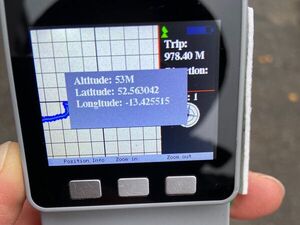
M5Stack GPS for hiking
"GPS based on M5Stack Faces, with navigation to waypoint, location tracking on SD card and the ability to mark points to be reached later The idea of a microcontroller based GPS is not new to me. A time ago while I was in the mountains I started wondering about having a small and cheap GPS helping me find some predefined waypoints. At that time I was just a student and started designing a small GPS with Microchip 18F family, a Nokia 3310 Display and a serial GPS. Not so powerful, but it worked. When I bought the M5Stack, given also its shape, I decided to create a new version of that GPS, this time more powerful and with a better display. Functionalities Scope of this GPS is Show your track, your direction and the distance traveled/remaining Help you to head to some predefined waypoint Store your position on SD Card Every 10 seconds, your position is stored on memory and on disk.By comparing two consecutive positions, the GPS show the direction of the movement and on which direction we should turn to find our waypoint.Additional points can be marked and reloaded afterwards as waypoints, initial place or any relevant point.Waypoints can be grouped, renamed, deleted or moved between groups." [...]
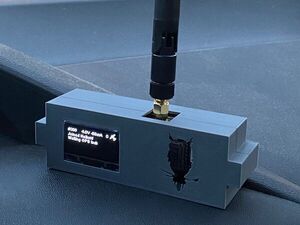
TTGO T-Beam Helium Mapper
"This is a mapper for the Helium network. It checks available hotspots, signal strength, quality, gps location & sends to the Helium server. This is a project that maps hotspot info & sends to the helium server using the TTGO T-Beam rev 1.1. It is delivering data to mappers.helium.com and cargo.helium.com using the Helium API. This project took a lot of playing around and most of the core code was taken from several sources noted below. I looked at all the existing mappers out there and what it would take for me to build one with gps and lora." [...]
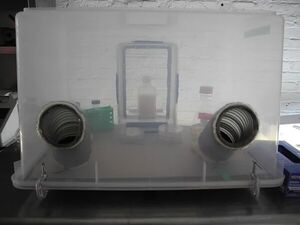
DIY Anaerobic Chamber (aka Glove Box)
"This DIY Anaerobic chamber is considered a fully functional piece of Bio Art, As a statement from the Maker DIY community to the large Institutions that have a tendency to withhold knowledge. It was designed and built to grow cultures of Geobacter Sulfurreducens bacteria, to do research and experimentation on my other Bio Art project: a Microbial Fuel Cell project called "BactElecTric". It is important to state the fact that this is piece of equipment intended to be used in a Bio Safety Level 1 lab environment. Also, it was conceived to keep a low oxygen level atmosphere inside of the chamber, it is constantly pumped with inert gas such as Nitrogen or Argon. It is NOT(repeat...not) intended to keep organisms from going outside of the chamber, it is intended to keep a desired atmosphere inside, with positive pressure. It is NOT air tight, the positive pressure and small leaks keeps outside air from going in." [...]
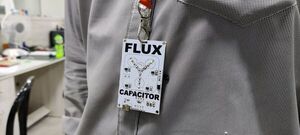
Flux Capacitor PCB Badge
"Great Scott! It's a Flux Capacitor powered by an ATtiny85. So this is my "FLUX Capacitor" PCB Badge which is a replica of the actual Flux Capacitor which was in back to the future movie. The Flux Capacitor was the core component of Dr. Emmett Brown's time-travelingDeLorean time machine which makes time travel possible. Also, the Flux Capacitor in the movie required 1.21 Gigawatts of power to Run which was supplied via the plutonium nuclear reactor which was later replaced by Mr. Fusion." [...]
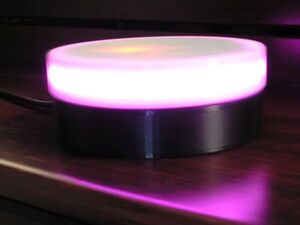
The Original Solarfidget
_"Using an LED-Ring (of 36 rgb leds) and an MPU6050 gyro/accel, this fidget calculates the position of a rotating pendulum that reacts to acceleration and gravity and simulates the effect of gravity on different bodies in our solar system (including Pluto). Supplies: - 1x Arduino Nano or Arduino Nano 33 - 1x MPU6050 breakout board - 1x battery charging breakout board - 1x 36 addressable LEDs stripe (*) - 1x HS170 380mAh LiPo battery with Molex plug - 1x male Molex plug (**) - 1x 3d-printed models of both the fidget and charger parts (***) - 1x USB mini cable - 4x 0.3x4x5 mm compressing spring - 4x M3 locknut - 4x M3 nut - 4x M3x10mm bolt - 4x M3x4mm bolt - 8x cylinder magnet d=5mm,h=2mm, - and a punch of cables one can salvage from old LAN cables or similar. "_ [...]

Hackvent Calendar
"Seasons Greetings! It seems a bit early for Christmas but this fun project needs to be done early to be ready for the festive period. This little project is one that I did over a weekend with my kids. I asked my young son what project he wanted to do for this Christmas and he had some pretty wild ideas about an electronic Christmas decorations, mostly involving flashing lights, music and a robotic Santa's sleigh, he had even done a really cool little schematic of what he wanted to build! After a bit of negotiation we decided to leave the robotic Santa's sleigh for next year and go for the advent calendar with flashing lights and music. There's 24 coloured LED's that represent the 24 days of advent and a big white LED in a star to represent Christmas day." [...]

3D Printed BOOMBOX
"A 3D Printed BOOMBOX made completely from Scratch. So this is my 3D Printed BOOMBOX Bluetooth Speaker which is a completely 3D Printed Speaker setup that houses Four Speakers with a 100W Bluetooth Audio Amplifier Module based on TTPA3116D2 100W Audio AMP IC. " [...]
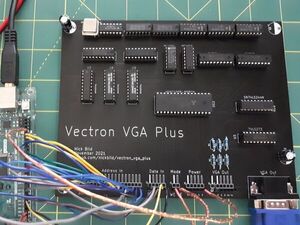
Vectron VGA Plus
"Vectron VGA Plus is a VGA graphics adapter that can interface with retro computers or microcontrollers. How It Works I previously built a massive 7400-logic based VGA generator called Vectron VGA. While it was a nice project to build, it is huge, and not very practical to keep around for use in lots of other projects. I built Vectron VGA Plus as a much smaller, simpler alternative. The key change that simplified the design was to use more RAM and less logic. So, for example, instead of having counters and flip flops, etc." [...]

3D Printed Moon Lamp - Complete End-to-End Design and Build
"The complete end-to-end build of a moon lamp. This lamp uses a custom PCB for an ESP32 driving a 3W RGB LED. This is the complete end to end build of my 3D Printed Moon Lamp - design, 3D printing, electronics and final assembly. The RGB LED is driven by an ESP32 and has a web interface for choosing the Red, Green and Blue levels. I designed and build a custom PCB for the electronics. " [...]
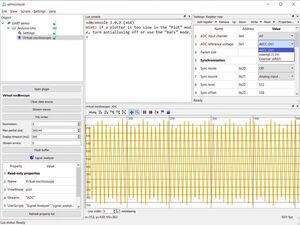
Yet Another Virtual Oscilloscope for Arduino
"Turn your Arduino into a virtual oscilloscope with a sampling rate of 4.8 kHz This project uses the on-chip ADC to capture and visualize a signal waveform. It supports different trigger modes (including external triggering), allows the user to select an analog input channel, reference voltage and control MCU pins. The PC application used for this project is based on the Simple Device Model open source platform (disclosure: I wrote it). It supports both Windows and Linux. The project was tested on an Arduino Uno board and may or may not work on other AVR-based Arduinos. Note that with a sampling frequency of 4808 Hz, this project cannot be considered a replacement for a real oscilloscope." [...]

Universal OPAMP Board for SMD MSOP8 Package
"This is easy to build and very useful project for hobbyists and students to learn and create OPAMP-based projects. The project accommodates a single OPAMP in the MSOP8 package. The project provides the user with multiple choices and extensive flexibility for different applications circuits and configurations. It provides the user with many combinations for various circuit types including active filters, differential amplifiers, and external frequency compensation circuits. A few examples of application circuits are given below. OP777 op-amp is the right choice to use or any other MSOP8 op-amp with the same pin configuration as OP777 can be used." [...]

LoRa Based Smart City Air Quality Monitoring
"A solar-powered environmental monitoring system based on the Reyax LoRa module and Grandeur IoT Cloud platform for a smart city. Smart City & Air Quality The World Bank defines a smart city as one that is a technology-intensive city. This means highly efficient public services. One of the fundamental features of smart cities is providing a sustainable environment. For a sustainable environment, it is necessary to monitor the environmental conditions for identifying the sources of pollution and mitigate them. In this context, thousands of air quality sensors are placed to provide real-time information to the government and citizens alike." [...]

3D Printed Artificial Muscles: Erector Set
"After experimenting for many years with artificial muscles that are 3D printed, I have come up with a fairly efficient configuration of muscles and bones that can be printed in modular form. This allows for the muscles and supporting bone structures to be reconfigured in various ways to create many kinds of robots. This creates a kind of erector set that is plug and play--to make robots that are limited only by your own creativity. The most efficient pneumatic artificial muscle I have developed so far, I call the Omega muscle. Shaped like the omega sign, it is at once a muscle, a tendon, and a ligament that locks into a slot in a bone structure. It provides maximum expansion or rotational movement while occupying a small volume at rest." [...]
Guitar Pickguard Wireless MIDI Controller
"A wireless MIDI controller for an acoustic guitar's pickguard that detects note presses via capacitive touch sensing. I perform and record fingerstyle guitar music and wanted a way to control a software synthesizer during live performances. This would allow me to perform more complex arrangements and diversify my sound. The simplest way I could think of doing this was by adding a MIDI controller to the pickguard (known as a scratchplate in the UK) of my guitar. This is in a convenient place for fingerstyle players as the picking hand rests close to this region of the guitar in most fingerstyle techniques. Capacitive touch sensing was used as it allows larger contact areas to detect note presses." [...]
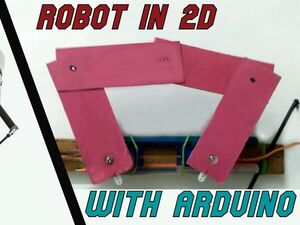
2 Dimensional Delta Robot with Servo Motor & Arduino
"It is a delta robot but in 2 dimensions. It has 4 moving links so can be called a 5 bar mechanism. It uses the Inverse Kinematics method. This is a 2d delta robot that has 4 moving links and 1 stationary link. This makes it a 5 bar mechanism. It is powered by two servomotors." [...]
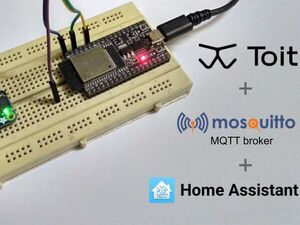
ESP32 and Toit: Integrating Home Assistant through MQTT
"In this tutorial, we’ll have a look at how we can create an MQTT sensor for Home Assistant with ESP32 and the Toit platform. Home Assistant is one of the largest open-source platforms for home automation and is very popular for managing things through IoT. Toit on the other hand provides an excellent platform for building and deploying IoT applications with very little effort. Toit recently released the support for MQTT protocol and we’ll be using it to send temperature and humidity values coming from an SHT31-D sensor. The data will then be displayed in Home Assistant in interactive cards with the graphical format. Finally, we’ll also send a high-temperature notification alert through the Home Assistant’s mobile phone app." [...]
Secção Videos
Videos interessantes.
That's all Folks!



